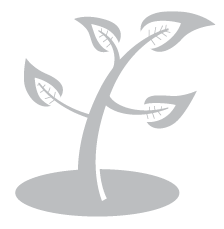
Chapter 12: Pruning Evergreens
Evergreen trees are popular, especially in northern climates where deciduous trees lose their leaves. They provide color to counter the winter bareness of deciduous plants and make a great focal point in your garden. Many evergreen trees are conifers — that is, they bear cones. But, just as many types of evergreens produce berries instead.
Most evergreens need little pruning if you allow yours to grow naturally. If you decide to conform your plant to a specific shape or size, then expect to spend more time pruning it than usual. In this situation, you may want to pick an evergreen that will mature close to the size you desire. Although evergreens make up a broad list of plants, most do not need special pruning at planting, nor do most react with shock when transplanted.
You can distinguish conifers from berried evergreens by the cones they produce, although sometimes those cones look like seeds, as in the case of yews. They also have needled leaves, as opposed to broadleaf evergreens that produce berries instead of cones. Some popular conifers include pines, spruces, firs, yews, arborvitae, cypress, hemlock, and juniper, whereas familiar broadleaf evergreens make up an extensive list that include azalea, holly, mountain laurel, rhododendron, bougainvillea, jasmine, gardenia, oleander, camellia, hibiscus, and olive.
General Rules About Pruning Needled Evergreens
The challenge with pruning needled evergreens is they have a fast growing season that occurs for only three weeks, although there are a few, such as the hemlocks and junipers, that have a longer growing period, while the yew also grows in summer. This short opportunity is the perfect time to prune your needled evergreens. This growing period includes pines, most spruces, firs, and yews, and it happens around April in warmer climates and mid-June in colder areas. Arborvitae, cypress, hemlock, and juniper start their growing periods a little later.
Follow these four basic principles when pruning needled evergreens:
1. First, start when the tree or bush is small. If you wait until your plant reaches the height you desire, you will have a harder time getting the shape you want so begin shearing when it is young.
2. Only prune off a third of your tree or bush. More than that at one time will result in shock.
3. Shear your evergreen every year. If you miss one year’s pruning, you will have a difficult time shaping your tree or bush again.
4. Shear when new growth is wet, such as in the early morning or after rain.
Shearing a needled evergreen tree or bush ensures a bushier plant. Shearing once a year will give your plant a natural look, but this can cause the tree to grow too large. If your goal is to confine your plant to a certain space or shape, you may need to shear it two or three times each year. You can prune lightly and let your tree or shrub grow gradually, or you can prune severely so your plant stays small but thicker.
When shearing needled evergreens, you should stick to the shape you desire it to be when it reaches the height you want it to be. Remove terminal buds, the fat brown buds at the end of each twig that form the previous year, and dormant buds, which are thousands of almost invisible smaller buds on the twigs and branches. Dormant buds do not grow, but if you shear them during the evergreen’s growth period, it will stop the active growth of the terminal buds and stimulate the sprouting and growth of the dormant buds.
Also, be aware of the two different growth patterns of needled conifers: random branching and whorled branching. It is important to realize the difference so you prune your specific plant accordingly.
Conifers with random branching have branches that sprout anywhere along the trunk and branches. These type of needled evergreens grow in spurts through the growing season, and they also vary in their ability to re-sprout if cut back into older wood. Shearing will make growth denser, but how much to shear will depend on whether your particular tree or bush sprouts from both old wood and new wood or just from new wood alone. Also, random branching conifers handle pruning well because their bud locations and growth timing are not rigidly programmed as in the whorled branching conifers. You can train a random branching tree by cutting back wayward branches or removing them completely to promote denser growth. If you desire to limit the size of your random branching evergreen, shorten branches before growth begins each season.
Conifers with whorled branching have branches growing in whorls at intervals along the trunk or stems, with few latent buds or dormant growing points on the leafless parts of the branch. These branches will not re-grow if cut back. On whorled branching conifers, each bud is programmed for all the growth it will do for that season so if you want to make a whorled branching evergreen bushier or if you want to slow its growth, you need to pinch back new growth in the spring when the buds expand but before they fully expand. If you want to remove branches altogether, prune just before growth begins so new growth will hide these cuts.
Needled evergreens often grow into a naturally spire-like shape, but you will need to prune to train it into a single central leader when young. With conifers, there is rarely competition with the central leader, but should there be, cut those shoots off completely to avoid having more than one shoot developing into leaders. This will prevent upsetting the symmetry of the tree and will also prevent old, dead bark from building up in the narrow crotch between the leaders that will not have living tissue to join them and possibly cause a split between the leaders as the tree ages.
Sometimes a leader can sustain damage or break off. If your conifer is a whorled branching tree, one or more of the top branches may then bend upward and try to become the leader. You will have to choose which branch will be the leader and stake it to the remaining portion of the damaged leader. This will cause the other branches competing for leadership to droop back to their previous positions. If a bud develops on the damaged leader, it may grow an upright shoot. Choose this as the leader over any top branch because it will be more vigorous and in a better position to serve as leader of your tree.
Whether your needled conifer is a random branching or whorled branching variety, it will require minimal pruning once trained and shaped. Watch out for overcrowded limbs because you run the risk of some branches not receiving adequate light and possibly dying with overcrowding. Thin out overcrowded laterals and also remove any dead or diseased wood. In addition, be aware that lower branches may die as the tree or shrub ages so remove these branches slowly over the years rather than risk shocking your plant.
If you are attempting to shear your conifer into a specific shape, keep in mind that this requires a lot of work. Over time, as you cut back branch tips while leaving a little of the earlier growth, your sheared evergreen will grow larger and larger, eventually outgrowing its space. Also, avoid severe pruning because conifers rarely re-grow when extensively cut back. A better alternative to shaping a conifer is to choose one that is the right size and shape to begin with.
Popular Needle-leafed Evergreens
If your evergreen has needled leaves, then it is more likely in the pine, fir, cypress, or spruce family. Some of these trees have clusters or bundles of two to five needles, while others have single needles attached to their branches. Clustered needles include the various pines, while single-needled evergreens include the spruces, firs, cypress, yew, and hemlocks. Most needle-leaf trees are conifers.
Pines
Pines are needled conifers with whorled branching. There are 115 species of pine, and with a few exceptions — such as the Australian pine, red pine, and Scotch pine — most have no latent buds or dormant growing points. You can make your pine smaller by cutting main branches back to secondary branches when the pine is dormant. Another way to retain your pine’s size is by pruning its candles. This will also make your tree fuller and bushier.
You can trick a mature pine into growing side branches if needed by cutting away a ring of bark about 1/8 of a inch wide around the stem where you want the side branches to grow. Another trick is to remove needles about 1 to 2 inches beyond where you want branching to occur. Although these tactics work on a mature pine, they work best on younger pines. They also are most successful when you cut bark or remove needles close to the end of the stem.
Spruces
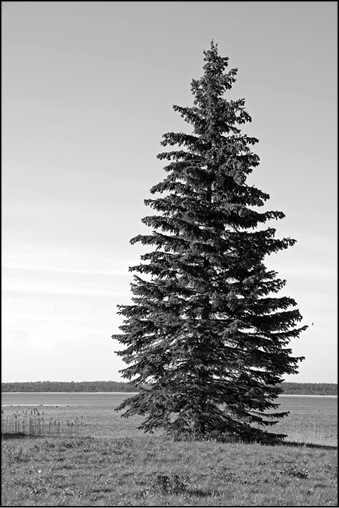
There are 35 varieties of spruce, and they all have whorled branching with few dormant buds. Spruces rarely need pruning because they have a naturally pleasing shape. When planting a young spruce, make sure you choose a dominant leader and remove any competing leaders. If you want to make your spruce smaller as it matures — they can grow from 66 to 200 feet high — you need to prune back to the side branches or to the visible dormant buds. If you wish to make your plant denser or thicker, pinch lateral shoots when they are half-grown in the spring. You can also shear your tree right before growth starts and then shear again in late spring or early summer. Always wear thick protective gloves because the spruce’s needles are quite prickly. Other than that, spruces need minimal pruning. Do not be tempted to prune lower branches — spruces look their best when their lower branches sweep the ground.
Firs
There are around 55 species of firs that can reach 30 to 260 feet tall. Firs have a whorled branching pattern, few dormant buds, and a short space between needles along the stem. They are naturally dense conifers and need minimal pruning. Should you desire a denser fir, simply pinch developing shoots in the spring, and cut branches growing in odd directions back to the laterals. Do not pinch the top whorl, unless trying to restrict your fir’s height because the top whorl will not re-grow, or if it does, it will do so poorly.
Yews
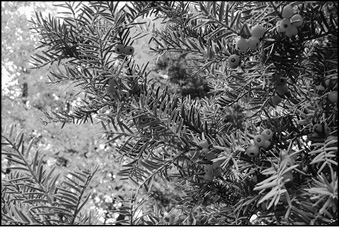
The yew is a popular flat-needled evergreen found in many gardens because of its attractive yellow color. Yews have random branching patterns and seldom need pruning.
Their branches have dormant growing points, and because of this, the yew can handle severe pruning if necessary — for example, if it has overgrown — and it will rebound with gusto. For example, if you want to control the size and shape of your plant, make heading and thinning cuts back to old wood. You can also make this conifer denser by pruning the end of its stems by a third to a half. You can grow it as a bush or train it as a tree. If you are shaping it again, cut stems back by a third to a half. Also, if you live in a cold climate, round the tops because yews tend to grow flat tops that can catch snow that can damage its branches. Trim the new overlong shoots that often sprout up and out after winter pruning. Make sure you do your pruning gradually, a little at a time each winter. In three years, you should have the yew in the size and shape you desire.
Arborvitae
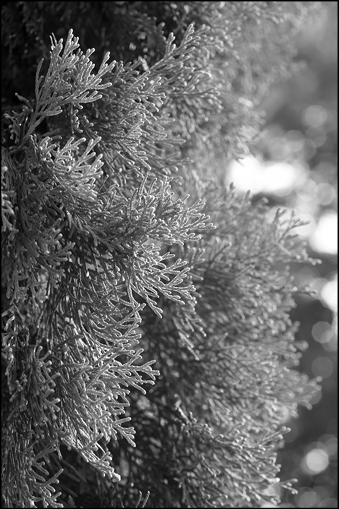
The arborvitae is another type of random branching conifer that can grow upward of 40 feet tall. They are easy to care for and can handle severe pruning, although they actually require little maintenance. It is best to prune them annually to keep them under control because they are fast-growing conifers. The best time to prune your arborvitae is in the late fall or early winter. You can prune an arborvitae in spring or summer, but their tips tend to brown when pruned in warmer weather.
Prune the wood back to side branches or where there is foliage, or make the tree denser by cutting back the tops of the stems. Arborvitaes tend to naturally grow in a cone shape, but if you want to shape your tree even more, it can withstand extensive shearing. But, the best shape to prune your arborvitae is a rounded or pointed top because this is its natural growing pattern. Make sure the base is wider than the top so sunlight can reach the lower branches.
Cypress
Cypresses are fast-growing, random-branching conifers that need minimal pruning. A cypress can grow 3 to 4 feet a year, up to 70 feet tall and up to 20 feet wide. Should you decide to prune yours, it can sprout new growth wherever it has leaves. Make sure you do so in dry weather because wet weather will introduce it to disease. If you are shaping your cypress — which is seldom necessary — cut branches back to either a lateral or to a point where there are leaves. To make your tree denser, prune back the tips of the branches. Also, remove any dead or diseased branches by cutting the stem back to where it is healthy. If your cypress is getting too tall, cut off the top, and if it is too wide, shape it by cutting back its side branches. Cypress can get quite dense so you may want to thin branches on the inside of the tree so sunlight and air circulation can reach the center. Keep in mind that cypresses grow slowly after pruning.
Hemlock
Hemlocks are naturally full and can be grown as trees or bushes. If grown as trees, they can reach up to 60 to 80 feet tall and 25 to 30 feet wide. But, they grow slowly and tightly, which is why they are often used as windbreaks or privacy screens. They have a random branching pattern and a natural cone-shaped form, and they can re-sprout stems from bare wood. To prune or shape your hemlock tree, do it in late winter so you make your cuts before new growth begins. Do it over a series of a few years so less stress on the tree occurs. If your hemlock needs rejuvenation, severe pruning works best.
Juniper
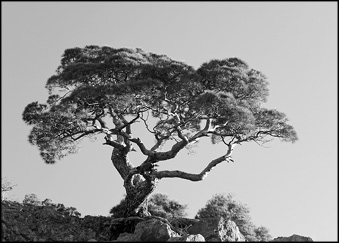
Junipers are in the cypress family and have random branching with growing points even where there are no leaves. They also produce berries. Junipers have a naturally attractive form and need minimal pruning, but they can withstand the most severe pruning more than any other kind, with leaves that are either needles or scales, depending on the species. The scale-like leaf species can withstand more severe pruning than the needle type, but both endure major shearing.
You can prune your juniper tree or bush at any time of the year, except summer. If you want a denser juniper, cut back the stem tips. To remove larger branches, shorten them to the weaker laterals. This will make your juniper plant smaller but will open up the interior to light and air. This helps because interior branches on junipers often die out because of the thickness of the plant that causes intense shading in the center of the tree. Also, remove any stems or branches sticking out from the rest of the plant. Although junipers can handle intense pruning, never cut beyond the green part of a branch. If you do, your branch will not grow back.
General Rules About Pruning Broadleaf Evergreens
Broadleaf evergreens are the opposite of needled evergreens in that they need little pruning as they mature. What pruning they do need is similar among this very extensive list. In general, the rules of thumb are as follows:
1. Train when young with early pruning in order to create or encourage your broadleaf’s natural shape.
2. Shape your tree or shrub in early summer, after your plant has finished blooming and is actively growing. Do this by snipping off the terminal or end buds on new sprouts in order to force latent buds to develop and grow along the branches. To keep your bush small, pinch off terminal buds for the remainder of your shrub’s life.
3. Do not remove the large, fat buds because they are next year’s blossoms.
4. Most broadleaf evergreens need rejuvenation or renovation from time to time, spread out over two or more years. Do this in late winter or early spring. This includes shortening long branches, removing dead or damaged branches, thinning out thick growth, and cutting back the remaining branches.
Early pruning is a necessity in order to train broadleaf evergreens, but only prune a little so you can bring out the plant’s natural shape. When your plant is young, allow one vertical shoot to be the central leader, unless you are creating a bush. This central leader will become the trunk. Remove any other stems competing for leadership position. Branches growing off this central leader will eventually become the main scaffolding branches of your tree. Choose these main branches when your tree is young, and make sure they are spaced far enough apart — between 6 to 18 inches — so they will not become overcrowded as your tree matures. Allow some temporary branches to also grow off the trunk in order to strengthen your tree, but prune them back once they start getting big. Also, choose side branches growing off your scaffolding branches that are not growing closely, and prune off the rest.
If you are growing your broadleaf as a bush, however, allow multiple stems to grow from the ground level. Then, select two or three as your main trunks, cut off the branches growing from these trunks, and cut the other stems back to the ground.
If you want your broadleaf smaller, prune just before growth begins, cutting back the side branches within the tree or bush. You may want to wait until the plant has flowered in order to enjoy the beautiful blooms. But, if you want your tree or bush to grow denser, prune the plant when it is dormant in winter, or pinch new shoots when they actively grow in early summer. Snip off the terminal or end bud of new sprouts. This will force latent buds to grow along the sides of the branches. Once your broadleaf plant starts blooming, pinch off the small end buds of any branches growing too long, but leave the bigger, fat blossom buds because these will bloom the following year. If your broadleaf is a bush and you want it to stay compact, you will need to do this kind of pruning for its entire life.
When needed, you can remove a stem growing in the wrong direction by cutting it off at its point of origin or back to one of its side branches. Your broadleaf tree or bush will not need much pruning as it matures, but always remove dead or diseased wood and branches that cross or rub against each other.
Azalea
The azalea is a broadleaf evergreen in the rhododendron family that blooms every spring and summer and is stocked with leaves and growth buds along its stems. Azaleas need periodic pruning in order to shape them, to remove dead or diseased wood that sometimes occurs in winter, or to remove suckers growing from the base. You want to prune your azalea bush as soon as it blooms.
If you want to shape your azalea plant — or renew one that needs rejuvenation — shorten or remove the stems back to where there is green wood, unless you are removing larger branches, which you should cut off flush with the trunk. Pinch the growing tips once or twice up until August to cause your plant to become bushier and encourage branching because azaleas can sometimes become leggy or bare near the bottom. Also, remove any dead or overgrown wood in the center of the plant to allow the bush to receive more sunlight and air circulation in the center.
With the exception of pinching the growing tips, stop all pruning by June if you desire early blooms for the following year because azalea flower buds take eight to ten weeks to develop in warm weather. If your azalea shrub has become overgrown for its space in your garden, prune it back to about 1 foot tall.
Holly
Hollies come in many varieties and need pruning annually. Your tree or bush requires pruning in December when the plant is dormant. Prune carefully and only as needed for health, structure, and form, but do not prune severely or cut back into the leafless portions if you desire re-growth. Pruning for a specific shape is not suggested. Hollies do best when allowed to grow in their natural form.
Start from the inside of your tree or shrub and work your way outward. Remove dead or diseased branches, as well as rubbing or crossing branches and long and spindly branches. When trimming branches, cut just above new leaf buds or all the way back to the main branch. This will cause the plant to fill in with new growth, creating a bushier tree or bush the following year.
Mountain laurel
Mountain laurel is a broadleaf that can grow up to 12 feet tall. It needs little pruning beyond for shaping and for health, such as removing dead or diseased wood. The best time to prune mountain laurel is right after its flowers fade in May or June. This will cause your shrub to direct its energy into producing more blooms the following year. If you want to promote growth, such as when cutting back a leggy branch or if you need to renovate a bush doing poorly or becoming overgrown, cut the branches back to the root. Keep in mind that mountain laurels do best with a light touch.
Rhododendron
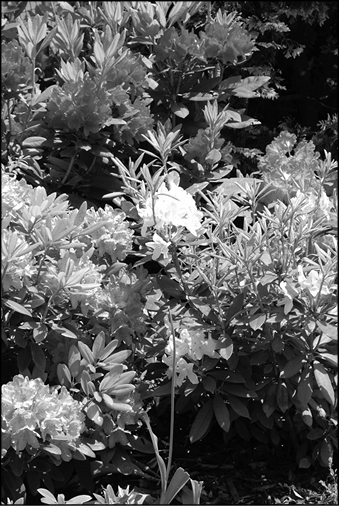
Rhododendrons are broad- leafs that need little pruning beyond shaping or renovating. They tend to be leggy, but you can encourage new branches by pinching off terminal buds just before they grow and also by pinching any growing shoots before their leaves expand. Terminal growth buds are slender, whereas flower buds are fat and stubby. The best time to prune a rhododendron is right after it flowers. If your plant outgrows its space in your garden, cut it back drastically after it finishes flowering. Drastically in this case means a few branches a year — since rhododendrons do not always grow new growth from old stems — until the plant reaches your desired size. Once you have pruned it, choose new main stems from the shoots that do grow as a result of the pruning. Do not expect to see new blooms for the next year or two.
Bougainvillea
Bougainvilleas are broadleaf evergreens that can be grown as shrubs or vines. The best time to prune them is in summer or early fall. Bougainvilleas can take severe pruning, but be careful — they have sharp thorns along the stems. If you have limited space in your garden, choose two or three main stems, and cut back the rest. Also, shorten any thin stems just before growth begins. If you want to encourage blooming, pinch off the tips of the stems. This will also cause the plant to grow fuller and branch out more evenly. Do not forget to thin out the center of any dead or diseased branches or branches that rub against each other. This will create more opportunity for sunlight to reach the center of the plant. You can also turn your bougainvillea into a non-clinging vine by growing it from one or two stems.
Jasmine
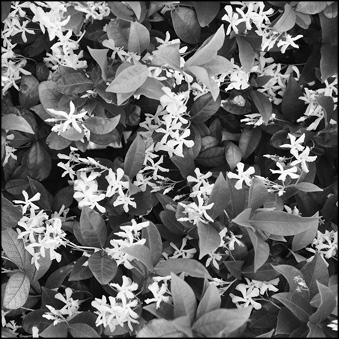
Jasmine can do fine without pruning, but cutting it back on a regular basis will promote more growth of its intensely fragrant blooms. Jasmine flowers on year-old growth so you want to prune after it has flowered in the spring. If you pinch back the tips, you will encourage lateral growth and more blooms for the following year. Remove suckers at the base so your plant will grow wider, and cut back stems about a third of the way to promote new growth. Cut back any scraggly stems, as well as dead or diseased wood, back to new wood just before a growing bud, and thin out overcrowded wood in the center to allow more air and sunlight to penetrate there. If you want your jasmine to thicken, pinch the growing tips to encourage branching.
Gardenia
Like many broadleaf evergreens, gardenia needs little pruning, except to shape or improve the health of the plant. The main reasons to prune your gardenia shrub is to remove any dead or diseased wood and to maintain the right size and shape for your garden. The best time to shorten stems and thin out twiggy branches is just before growth begins on the plant in late summer. If you want a denser shrub, promote further branching by pinching the tips of growing shoots — but do this by August at the latest. If your shrub needs rejuvenation, cut stems back severely because they will re-grow. The great and easy thing about a gardenia plant is that it can sprout growth on both new and old wood.
Oleander
Oleander is a large bush that sprouts freely from its base. The most important rule about pruning an oleander is to wear gloves and protective clothing because oleanders are highly poisonous. Having said that, it is an easy plant to prune. The best time for pruning is in September or October before new growth begins. Begin by pruning just above a leaf node where three leaves come out of a branch. This will encourage new branching. But, if you want to control the size of your oleander, cut the oldest wood to ground level, and shorten any overly long stems to the side branches. If you want to make your shrub denser, pinch the shoot tips. If your oleander needs renovating or has been neglected, cut it to the ground so it will send up new shoots. You can also train an oleander to be a small tree. Do this by removing the lower branches and root suckers.
Camellia
The most pruning a camellia needs is just a little to shape your plant and maintain its health. If your shrub is young, thin the flower buds in order to direct energy into growth. On older camellias, you can thin flower buds to increase the size of the remaining blooms. Do your pruning after the plant’s flowers have faded in May or June. The one thing about camellia is that its growth pattern can vary, from being too spread out when young to too gangly when older. Cut back the side branches to channel energy into vertical growth if the width of your plant is the problem, or head off some stems to the bases of the previous year’s growth to encourage branching if you need to thicken your bush. You can also create a bushier plant by pinching the growing tips. If your camellia needs rejuvenation, cut the bush back to bare stems, but do it slowly over several seasons, or your plant may not re-grow.
Hibiscus
Hibiscus is a broadleaf that does not take well to shearing so if you are shaping it, prune selected branches instead. It flowers on new growth, which you can stimulate by shortening stems by a third before new growth begins. You can promote thickness in a young hibiscus shrub simply by pinching its growing tips. If your hibiscus overgrows or needs renovating, cut back the old stems to side branches lower down on the plant. This is best done during the growing season in spring, but do not prune after August, or you will encourage new growth that frost in fall or winter can damage. It is always a good idea to thin out any overcrowding in the middle of the shrub by cutting off any crossing and rubbing branches or dead and diseased branches.
Olive
Olive is a broadleaf that can be grown to an ancient age. It is the oldest fruit tree known to man, with some living more than 2,000 years. If left to its own devices, it will grow dense, sending up basal sprouts and turning it into a bush instead. If you are planting a young olive tree, prune it with an open center and three scaffold branches. Remove the remaining branches, any water sprouts on the trunk and branches, and suckers near the root base. Then, wait until your plant is 3 years old before choosing strong secondary branches and removing the rest. Prune in summer, and at all times, avoid pruning severely.
Once your olive tree is mature, prune to keep it from growing too large and to allow enough sunlight to reach the center and encourage new fruiting wood to grow. If your tree becomes heavy with fruit, thin the branches out in late spring or early summer. This will encourage less but larger fruit the following year. If you have an old olive tree that needs renovating, cut back some of the larger branches and thin out the new shoots that will grow as a result. Never cut an olive tree’s branches back to the trunk; always leave a stub instead. Do not neglect to prune off any dead or diseased wood or branches that cross or rub against each other. You should also remove branches growing in a downward direction.